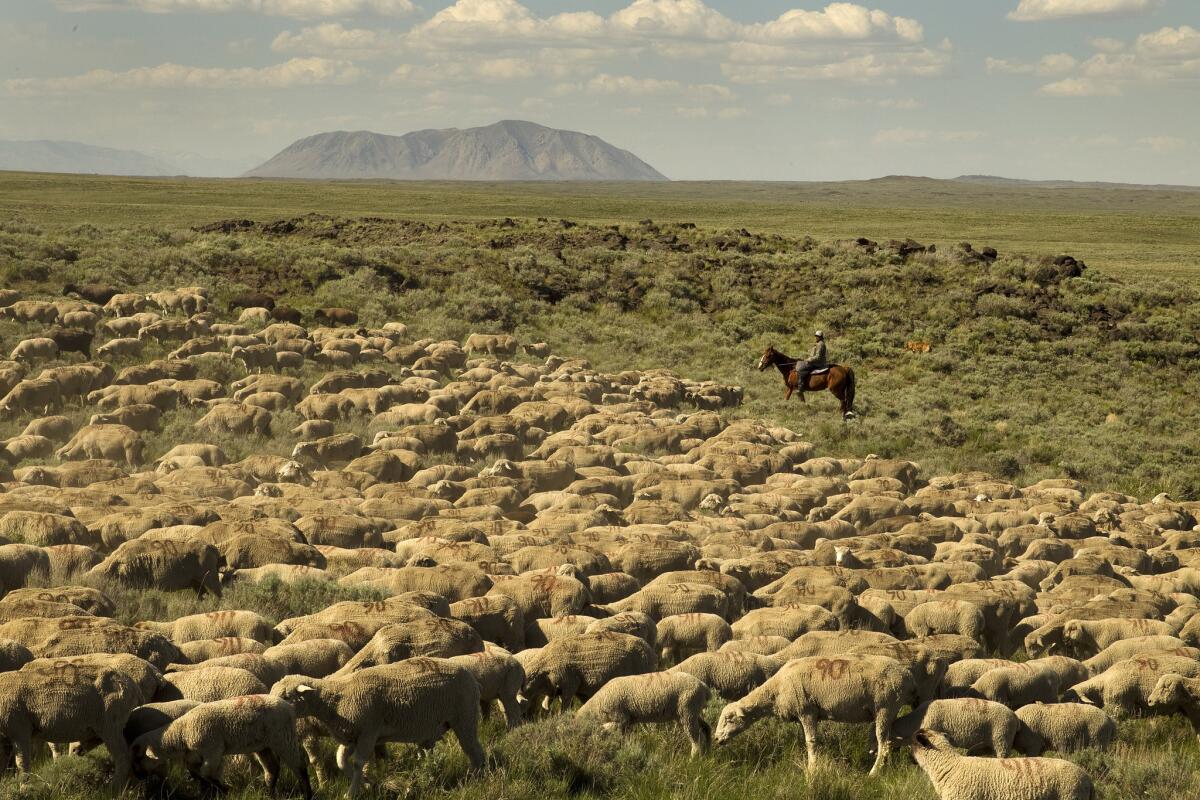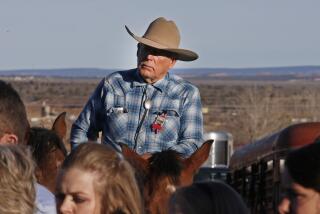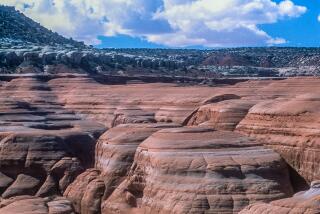Oregon standoff: Who’s really getting hurt by federal grazing laws?

A sheepherder works on Bureau of Land Management land in eastern Idaho.
The standoff at a federal wildlife reserve in Oregon has put a spotlight on an often overlooked conflict over grazing rights on federally owned land that has played out for decades across the West.
Few locals agree with the methods used by the armed activists who rolled into Burns, Ore., over the weekend and took over the headquarters of the sprawling Malheur National Wildlife Refuge. But they share some of the same frustrations with the federal agencies that manage about half the state’s land.
Ranchers have long complained that the government’s growing emphasis on protecting the environment is leading to more aggressive restrictions on grazing, timber harvesting and mineral extraction on the federally owned lands that have sustained their families and an iconic way of life for generations.
“All of that makes the ranchers feel like they are under siege, and they push back,” said John Freemuth, a professor of public policy at Boise State University in Idaho.
In the view of some conservationists, however, the ranchers are actually the beneficiaries of a government subsidy that effectively pays them to destroy some of the West’s remaining natural treasures by offering grazing land at deeply discounted rates.
Join the conversation on Facebook >>
How much land does the government own?
The federal government owns roughly 640 million acres, nearly 28% of U.S. land, according to a 2014 report by the Congressional Research Service. The vast majority of that is concentrated in 11 Western states, where nearly 50% of the land is federally owned, and in Alaska, where the figure tops 61%.

Army veteran Jason Bullock, left, “Booda,” middle, and “Socks” act as “personal security” guards at the entrance to Cliven Bundy’s ranch in Bunkerville, Nev., on July 20, 2014.
Until the 1970s, much of the land west of the Mississippi River was open to those who wished to farm or raise livestock. That changed after Congress passed the Federal Land Policy and Management Act in 1976, requiring federal agencies to support other uses, including environmental conservation, recreation and energy production.
The law was one of the major reasons behind the “Sagebrush Rebellion” in which a number of Western states attempted to wrest control of public lands from the federal government. Similar moves are afoot today in some states, contributing to the tensions that boiled over in Oregon this week.
NEWSLETTER: Get the day’s top headlines from Times Editor Davan Maharaj >>
How much federally owned land is open for grazing?
Two government agencies manage most of this land: The Department of the Interior’s Bureau of Land Management and the Department of Agriculture’s U.S. Forest Service. Livestock grazing is permitted on about 155 million acres managed by the Bureau of Land Management and 95 million acres of U.S. Forest Service lands. The permits and leases issued to ranchers to graze their livestock on these lands are generally valid for 10 years and can be renewed if they abide by the government’s conditions.
What does the federal grazing program cost taxpayers?
The Bureau of Land Management and the U.S. Forest Service charge livestock owners a fee to graze their herds on public lands. However, they typically spend far more on managing grazing than they collect in fees.
A report by the Government Accountability Office, a nonpartisan investigative arm of Congress, determined that the two agencies spent $132.5 million on their grazing programs during the 2004 fiscal year but the receipts were just $17.5 million -- a difference of $115 million.
Other studies have estimated that the cost to taxpayers is even higher. The Center for Biological Diversity, an environmental group, found that federal appropriations for these grazing programs amounted to $143.6 million in 2014 but said the agencies collected only $18.5 million -- a difference of $125 million.
That year, the fee charged by both agencies was set at $1.35 per animal unit month. That is the amount of forage needed to feed a cow and her calf, one horse, or five sheep or goats for a month. Had the government charged the average prevailing rate to graze on private rangeland, the receipts would have been $261 million, the study said.
Last year, the fee increased to $1.69 -- still below market rates, according to activists.
Why does the federal government charge less than private landowners?
Congress set the pricing formula used by the two federal agencies in a 1978 law that aims to avoid disruptions to the Western livestock industry. After a trial period, the formula was continued indefinitely through an executive order issued by President Reagan in 1986 that established a minimum fee of $1.35 per animal unit month.
The fee is reviewed annually and can be adjusted based on three factors: rental costs to graze livestock on private land, beef cattle prices and livestock production costs. Any increase or decrease is capped at 25% of the previous fee.
What is the cost to the environment?
Environmental activists argue that the low fees contribute to overgrazing that leads to soil loss, invasive plant species infestations, the killing of native predators and endangerment of other species on public lands.
Some conservation groups have called on the government to review its pricing formula. There have also been calls to restrict grazing on public lands or eliminate it entirely.
“There are no grazing rights,” Travis Bruner, executive director of the Western Watersheds Project , said in a statement this week. “But there are lots of grazing ‘wrongs.’”
Such assertions are fiercely contested by ranchers, some of whom contend that they are better stewards of the land that sustains rural economies than the federal government.
Any increase in federal grazing fees can be expected to face stiff opposition from those who fear it would put many small and medium-sized ranches out of business. They argue that federal fees are not comparable to those charged for leasing private rangelands because public lands are often less productive, must be shared with other users and may lack water tanks, fencing and other amenities.
ALSO
Armed standoff in Oregon endures, with more questions than answers
Texas grand jury resumes investigation into arrest, death of Sandra Bland
Republicans push again for an Obamacare alternative, with Donald Trump a looming worry
More to Read
Start your day right
Sign up for Essential California for news, features and recommendations from the L.A. Times and beyond in your inbox six days a week.
You may occasionally receive promotional content from the Los Angeles Times.







